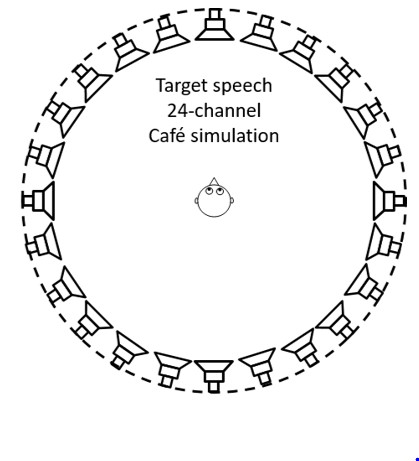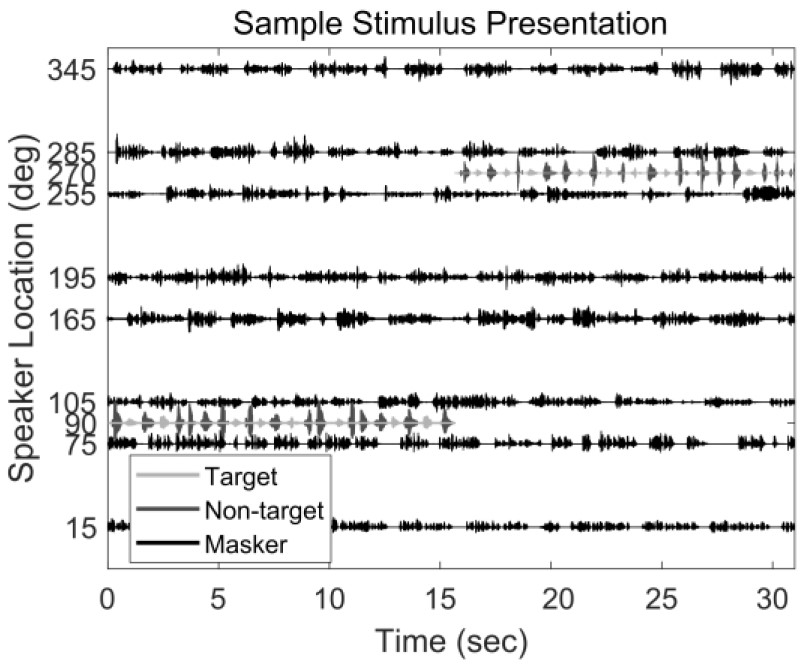Our Research Lab
Continuous Number Identification Task
A dynamic test of speech perception suitable for signal processing evaluation is needed.
The development of this novel speech test was motivated by a need for a measure of
speech intelligibility that allowed the indexing of dynamic changes in the acoustic
environment and adaptive processing in hearing enhancement technology such as hearing
aids. Speech tests based on single words or sentences are both too short in duration
and too sparse over time to capture the long-term changes of many signal processing
features used in hearing enhancement technology. A more desirable speech test would
be one that is continuously capturing performance over long-periods of time during
which an acoustic change is expected to occur. Furthermore, to work well with hearing
devices, the test should operate at signal-to-noise ratios compatible with hearing
aid signal processing feature engagement (-6 to 20 dB) and with subject performance
on relatively simple speech tasks (-20 to 6 dB). To meet these requirements, we developed
the Continuous Number Identification Test (CNIT).
The CNIT consists of a continuous string of monosyllabic words (drawn from over 2500 words) and monosyllabic digits. The listener task is to identify any digit that is heard by pressing the corresponding number on a touchscreen keypad. On average, every fourth word was a target digit and all other words were monosyllabic words. Non-numeric words had a fixed presentation level such that the dominant signal-to-noise-ratio (SNR) was held at +6 dB SNR relative to background maskers. To prevent ceiling effects, however, targets were presented at a user-specific SNR, determined by an initial adaptive-tracking procedure that estimated the 79.4% speech reception threshold.

Speaker array used to evaluate the CNIT.
The feasibility and psychometric characteristics of this test were demonstrated in a study with normal-hearing listeners (n = 10). From one location in the free field, speech was presented in noise (~2 words/s) with a 100-ms inter-word interval. The CNIT shows comparable psychometric qualities of other established speech tests for long time scales (Exp 1). Further, the CNIT shows high temporal resolution in assessing sudden changes to space (Exp 2) or SNR (Exp 3). The CNIT is highly customizable, and the initial experiments provide feasibility and verification of its primary features that set it apart from currently available clinical tests of speech-in-noise assessment.

Speech waveforms (time on x axis, amplitude on y axis) for various speaker locations (y axis). Target digits, non-target monosyllabic foils, and masker speech is illustrated via gray scale.